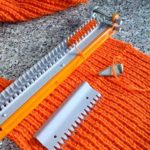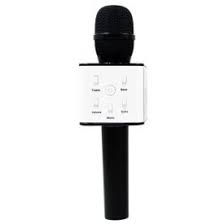Condenser microphone - what is it?
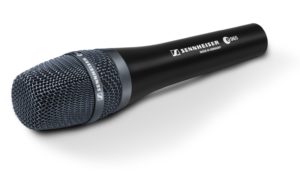 A condenser microphone is a unique device for recording sound. Mainly used for studio recording. Currently, this device has become widespread and is widely used in the music industry.
A condenser microphone is a unique device for recording sound. Mainly used for studio recording. Currently, this device has become widespread and is widely used in the music industry.
The content of the article
The peculiarity of a condenser microphone
This device has gained popularity due to its unique qualities, which 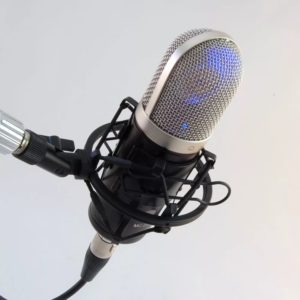 provide high quality sound recording.
provide high quality sound recording.
A large dynamic range allows you to record sounds of very different frequencies without losing quality both in the high and low parts of the spectrum.
Thanks to this property, musical instruments recorded with such a microphone sound the deepest, maintaining all the depth. In addition, the device has a uniform frequency response, which ensures amplitude balance over the entire spectrum, without losses in any area.
Operating principle
The sound recording process is based on the properties of an electrical capacitor. It consists of two covers, one of which is made of elastic film.
During the action of directed sound waves (voice or music), the soft lining vibrates, thereby changing the capacitance of the capacitor. Changing the capacitance of the capacitor allows you to modulate a constant signal according to changes in external waves.
The received AM signal will contain information about the recorded sound in the envelope.
IMPORTANT! To record, the capacitor must be charged, in other words, voltage must be applied to the microphone.
Phantom power technology is usually used. It lies in the fact that the useful signal is transmitted through the same channels and stages as the supply voltage.
Types of microphones
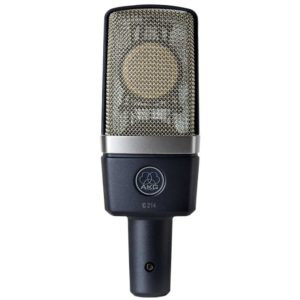 In addition to the condenser microphone, there are also devices with a similar operating principle. They are called electret microphones. They come in two types.
In addition to the condenser microphone, there are also devices with a similar operating principle. They are called electret microphones. They come in two types.
Homoelectret microphones.
The difference between these devices is that the membrane film is placed in the gap of the capacitor or on the plate. As a result, when exposed to sound waves, the membrane moves and the voltage from the capacitor changes in accordance with the frequency of the acoustic signal.
Typically, a transistor-based preamplifier is included in the design, since the output signal is too weak and there is a high probability of noise.
Heteroelectret microphones
They differ from homoelectrets in that the membrane is a heteroelectret wall. When exposed to directed sound waves, charges of different polarities appear on its surface. Their registration is carried out by electrodes located on the surface of this film.
Advantages and disadvantages of condenser microphones
pros
- Dynamic range. The main advantage of devices built using this technology is
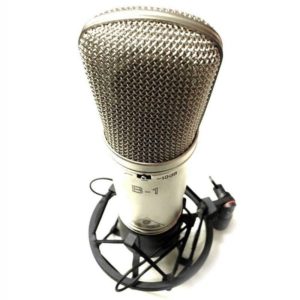 is a large range. It allows you to record sound over the full spectrum of frequencies without cutting off the high or low frequencies.
is a large range. It allows you to record sound over the full spectrum of frequencies without cutting off the high or low frequencies. - Uniform frequency response. This property ensures the absence of distortion at the device output.
Reference. Frequency response is an amplitude-frequency characteristic; it shows the dependence of the change in signal amplitude over the frequency range.This characteristic should be as uniform as possible to avoid a decrease in the signal in one area and an increase in another. Since this distorts the very nature of the signal.
- The rate of change in the nature of the wave. A high value of this parameter allows you to avoid loss of information during recording.
Minuses
- Demanding in handling. Due to their design, these microphones are extremely sensitive to their surroundings. Increased air humidity or temperature changes can change the quality of sound recording due to distortion of the frequency response.
- Large influence of third-party noise. Due to the wide range, in addition to the useful signal, extraneous noise enters the recording. Often this problem is eliminated by the presence of an amplifier at the microphone output. However, detailed processing may reveal noise in the spectrum. To avoid this drawback, recording should be done in a soundproof room.
- High price. High-quality devices are expensive to produce and are quite expensive. It is not possible to make a high-quality microphone at home.

